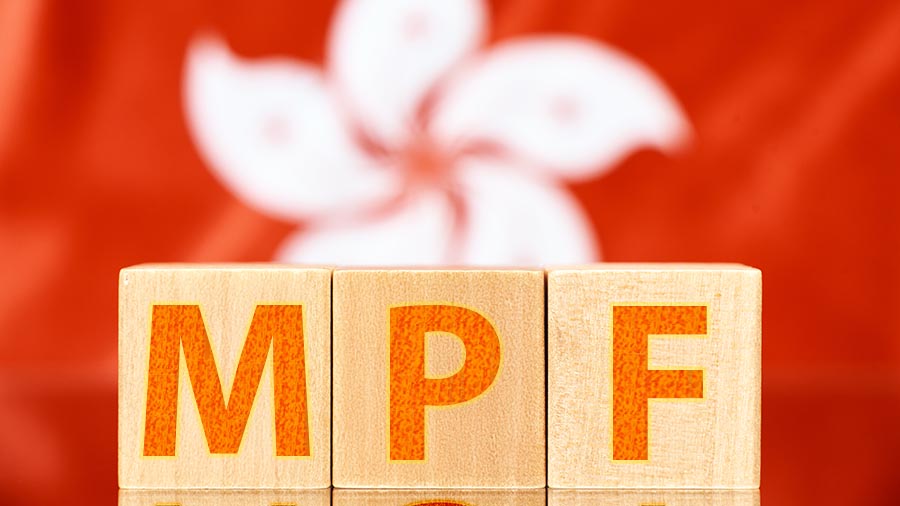China Looking Forward – Road Bumps Ahead

Some trauma inevitable as China lurches forward to 2015
Op-Ed Commentary: Chris Devonshire-Ellis
Nov. 25 – This is my executive summary following the Economist Newspaper’s annual China Summit in Beijing last week, which I have described in a three part series earlier this week (Part I, Part II and Part III). Kindly note the views expressed are my own, and are derived from my own experience of running a MNC business in China, as well as taking into account comments made during the summit. They do not reflect the views of, are not contributed to, and are not endorsed by the Economist Group itself.
The overarching feeling from this year’s conference, which bought together over 300 MNC chairmen and CEOs, academics and analysts, was one of some apprehension, although not in terms of a terminal decline. Much seems in fact obvious: that China’s growth rate is declining – to between 7 percent and 8 percent, down from the double-digit figures we have been used to for much of the last two decades. This is hardly surprising in fact, as it becomes increasingly difficult to maintain such high growth rates from an ever-expanding base. However, for the first time, the possibility of negative growth has been mixed into the equation – not as a long term projection, but potentially one of the “bumps” along the road over the next few years.
That being said, a growth rate of 7 percent or thereabouts is still pretty good going when compared with the United States and Europe, and this is why many MNCs still feel bullish about China. This is a sensible viewpoint, but should also be mixed in with a few bad weather signals.
Economic restructuring may be hindered by vested interests
Primary among these is the realization that China needs to change – but potential vested interests within the Chinese Communist Party may prevent the required restructuring from taking place. Many have become wealthy from the government providing financial incentives, and although the continuance of this is not recommended, there are pressures for this system to remain intact for as long as possible. Financing growth, as has been the case now in China for several years (and especially since 2008), through capital injections has only partially been working. Much of China’s financial incentives have resulted in negative trends such as property bubbles, bad debt levels within China’s banks, and money not being utilized where it is needed. Simply put, if China does not put in place structural reforms to wean its economy off cheap credit and into productive use, the stronger the potential for real trouble brewing ahead will increase. There are already concerns about the actual stability of many Chinese banks, with the manipulation of figures seemingly rife and a lack of transparency giving rise to questions regarding what is really going on. Certainly, the warning signs are there. It is up to the government to correct this – yet it remains to be seen if the political will is really there while the sun, for the present at least, still appears to be shining.
An analogy was made here with the TV series “Game of Thrones” in which seasons last for a lifetime, and the adjective “Winter is Coming” is not believed, as no-one alive can ever remember it. Winter is considered a myth, yet slowly but surely, it begins to arrive. There are some worrying parallels with some of the attitudes in China at present.
Cheap labor a thing of the past
Some well-defined research also introduced the concept of China now possessing too little labor, while what remains is literally in the wrong field. China’s labor pool, which has played a huge role over the past 30 years in providing the globe with cheap access to manufacturing, is rapidly drying up. Additionally, the labor talent that is being left is largely unskilled, reducing even further the pool of available workforce talent. This will have the effect of dramatically increasing the costs of China labor. To offset this, I heard talk for the first time from Chinese academics of the need to raise the age ceiling of retirement to keep people in the labor pool (this would also alleviate the underfunding within China’s state pension fund). It seems almost unavoidable that China is about to enter into a period of poor labor supply, pushing labor costs up. This will impact upon many industries, however two alternative options remain: follow the cheaper labor pool towards China’s central and western regions, or follow the cheaper labor pool outside of China and further into emerging Asia. Vietnam is an obvious example, as is the east coast of India. This is already a trend that is underway, and is to some extent fortunate – China’s inland cities are becoming wealthier and markets there are also growing. As long as MNCs can continue to fund and push expansion westwards in China, profits should remain, at least for the next decade. But there is an unsaid warning here – remaining in Shanghai or other first-tier cities will become an increasingly expensive option, and this applies to both the manufacturing and service industries. If your business has no “Go Inland” strategy, you risk being exposed.
Land reform unlikely
Land reform (especially in the agricultural sector) is urgently required as many of China’s rural workers are not getting economies of scale into their plots – they are simply too small. Yet combining these plots into industrially-sized areas able to provide increased yields remains problematic. What to do about compensation, reinvesting in modern machinery, and redeploying agricultural workers in urban areas where they are much needed? Here, China appears too stuck in its ways. I heard little appetite for tackling this problem, which impacts on the potential for freeing up much-needed labor in addition to putting up with inconsistent harvests and low yields. The issue over land compensation is already highly charged, with riots having been sparked across China whenever this raises its head. Local governments, keen to appropriate land and get efficiencies in, have been attempting to do so at too cheap a price, with social unrest often the result. The issue is being handled very badly. Additionally, the inherent hukou system – which restricts migrant labor from claiming benefits in anywhere other than their hometown, and also limits worker mobility – is unlikely to be repealed due to those same “social welfare” concerns (the hukou system is a throwback to revolutionary days to prevent the possibility of any migration of massed protests across China). While China continues to regard its peasant farmers as closet revolutionaries, land reforms are unlikely to be enacted. The consequences limit worker availability and agricultural investment.
Opening China’s capital account
The opening of China’s capital account would enable the RMB to be freely traded, free up China’s massive reserves for new investment possibilities, and place the economy on a market-led basis. The argument is that, at present, a closed account limits China’s investments into mainly its own economy, and not those of others (European politicians please note), protects China from hot money inflows and outflows, and allows the government to manage the entire process of economic reform. To date, this has worked for the past 30 years. But with China now the world’s second-largest economy, questions are being asked about its willingness to accept it now has a globally integrated role to play, and one that to date it has shown little appetite for taking up. For China, taking its hands off its wallet seems to be an extremely difficult thing to do. Yet that this is hindering both China and the global economy seems in little doubt.
By keeping the capital account closed, China continues to maintain a closed economy that is manipulated by the government. However, a lack of transparency also provides questions as to the exact state of China’s economic position, and especially that of its banks. The longer it keeps its hands tied, the more concerns will arise over the true extent of debt within China’s banking system. Additionally, by not taking a more positive role in global economic affairs, China (with the world’s largest foreign currency reserves) is hindering attempts at a global recovery. With consumption low elsewhere, China’s exports have been dropping, and are becoming dangerously over-reliant upon the United States. Should the U.S. start to get tough, the consequences for China could be very serious indeed. That the Americans are slowly but surely building up supply chains elsewhere in Asia, as well as closer to home, should be a message to the Chinese that the United States may not always be there for them as the primary buyer.
Other factors crop up too. By maintaining a closed account, China is preventing further foreign investment flows into the country, and especially those needed in the financial markets. At a time when an increasing number of foreign banks are now selling off their stakes in Chinese banks (to both cash in on investment profits, and recapitalize back home in the wake of the global financial turmoil), this dividend is welcome in China but will suddenly cease once those profits have been absorbed. At that point – possibly within a year – China will see no new foreign investment in its financial services industry. That could leave China at the mercy of using its own financial instruments to invest in, and these, by and large, do not appear to have been managed well either. What are you going to do, build a new Maglev?
China needs foreign capital into its financial markets, and to do so it needs to liberalize its capital account. Unfortunately, the best prediction I heard was a tentative “by 2015,” with most shaking their heads. I agree with the latter. It is at moments like these when the realization that China remains far more communist than capitalist begins to strike home. My guess is China wants no truck with anything other than the socialist hand of the CCP on the national wallet, and that anything else is currently out of the question.
The next leadership
All of the above has of course been said and written tethered entirely to the logic of today. The one potentially game-changing tipping point that is about to occur is the transition of China’s leadership early next year. In fact, this has already commenced as several top officials relating to the management of China’s economy have already stepped down and replacements appointed.
This change will have been the third that I have personally witnessed from living in China, and I see no signs or reason that anything untoward will happen during this process. Media that speculates otherwise is purely mischievous. However, a new guard stepping in will, in time, want to imprint its own personality on the development of China. It does seem – in the light of what I have said above in terms of a lack of reform in key areas – that the current leadership has run out of steam. The extent of fresh air the new Chinese government leaders will bring to the country remains unknown. What is known is that some parts of the current Five Year Plan are quite radical and do cater for issues such as capital account liberalization, land reform and economic rebalancing. It is difficult to see these taking place under the current leadership, and given they only have a few months left and are already in a transition period, this seems reasonable. The new leadership will also want to wait a while prior to making any significant changes. So we too will have to wait and see. Coming to the end of one government and trying to look ahead to see the future through the eyes of a new one is always difficult. I remain cautiously optimistic; but those reforms are required. If they do not occur, winter in China may start to blow in sooner than we think.
Predictions for next five years
- China GDP growth: 7 percent
- Inflation: 5 percent
- Economic reforms to commence from 2013-14
- Increased foreign and domestic investment in central and western regions
- Labor costs to double by 2013, then stabilize
Chris Devonshire-Ellis in the founding partner and principal of Dezan Shira & Associates. To read his report on last year’s Economist China Summit, please click here.
The Economist Newspaper has been published since 1843 and is one of the world’s leading newspapers detailing the global economy and its political influences. The Economist runs, through its conferences division, a global series of high profile events. To view the Economist conference schedule, please click here.
Related Reading
Economist Summit Part I: China’s Economy – Bulls or Bears?
Economist Summit Part II: Has China’s Demographic Dividend Payout Ended?
Economist Summit Part III: The MNC Perspective – Becoming a Global Challenger with Chinese DNA
2012 China Investment, Operational and Budget Tips
- Previous Article China’s PMI Drop Adds to Concerns over Global Recession
- Next Article Chinese State Secrecy Laws Being Pulled Apart Under Audit Stresses




























